King Marko’s Monastery
South of Skopje, on the outskirts of an unassuming village called Markova Sučica, is the Markov Monastir. Built in 1346 by King Marko of Serbia, this medieval monastery has remained remarkably unaffected by the passage of time.
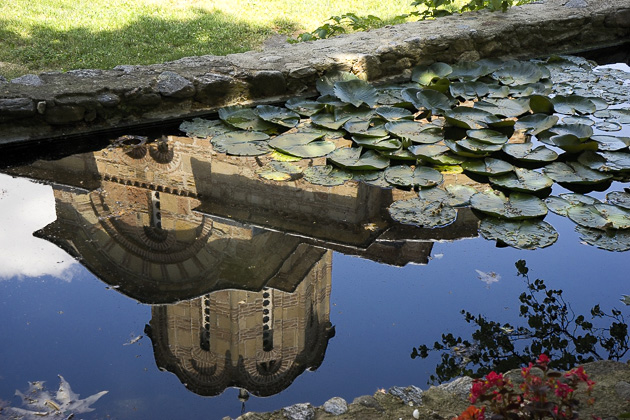
Although Marko Mrnjavčević was technically king of all Serbia, the great majority of the country was controlled by powerful noblemen hostile to the crown. So in practice, King Marko ruled over only a small section of present-day Macedonia, with his capital at Prilep. His reign coincided with the ascendancy of the Ottomans and, although he initially resisted their encroachment, Marko eventually became a Turkish vassal. He even died while fighting for his Muslim masters against Christian Wallachia, during the pivotal Battle of Rovine.
The unremarkable reality of King Marko’s reign hasn’t prevented him from becoming a cherished personality in Slavic folklore. King Marko is considered a hero by Serbians, Bulgarians and Macedonians alike, figuring in epic poems and legends, usually fighting for the common man against powerful enemies. He often appears as a giant, capable of extraordinary feats of strength, and is even rumored to be immortal… currently at rest in some long forgotten cave.
The earliest known painting of King Marko is above the doorway to his monastery in Markova Sučica, where he stands next to his father, King Vukašin. And this isn’t the only piece of artwork at this well-preserved monastery. The interior of the small stone church is replete with ancient frescoes which depict biblical scenes and moments from the lives of saints, such as Nicholas saving three innocents from execution.
Almost as impressive as the monastery’s artwork and age, is the natural beauty and solitude of its location. The complex was empty during our visit, except for a single nun whom we spotted shuffling quietly into her room. After checking out the church, we sat for a while on a bench in the shade, next to an oven used for making rakija. The only audible sounds were those of crickets and the babbling of a nearby stream.
It’s possible to take a bus from Skopje to Markova Sučica (#80 or #80A), but there are only a few connections per day, so you’d have to plan carefully. That was too risky for us, so we visited only after renting a car. But the difficulty of reaching the monastery is part of its charm. This is a lovely, peaceful place, and the fewer visitors, the better.

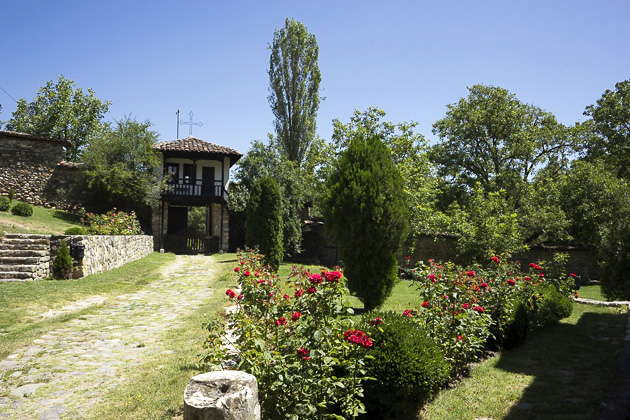
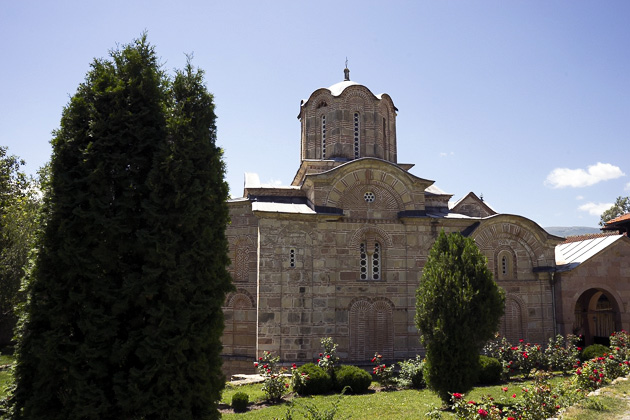
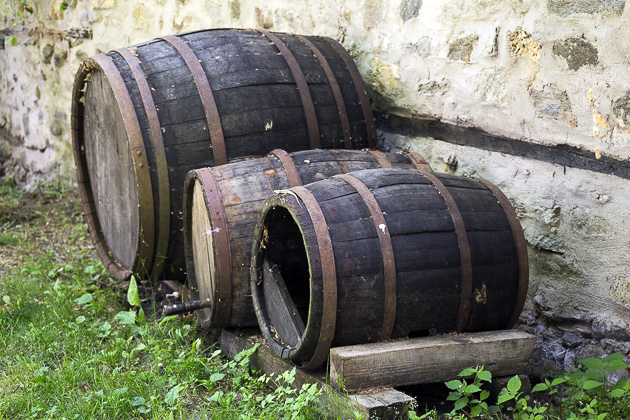
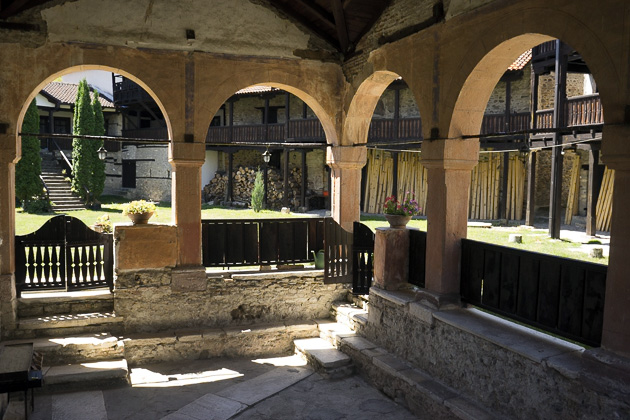
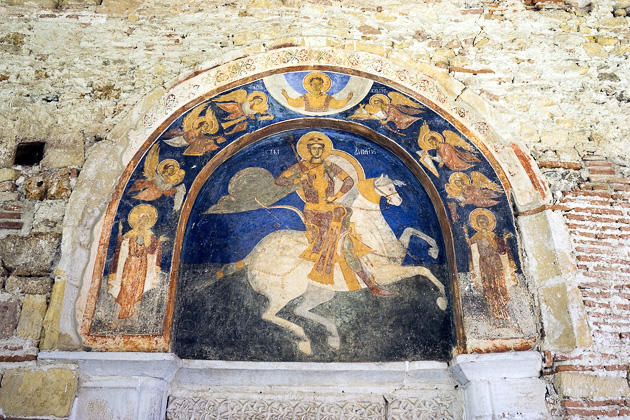
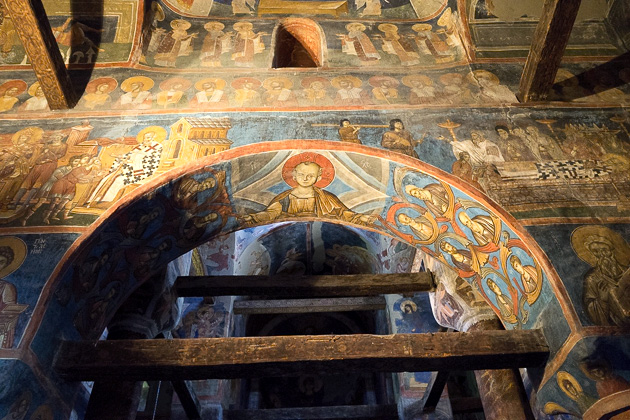
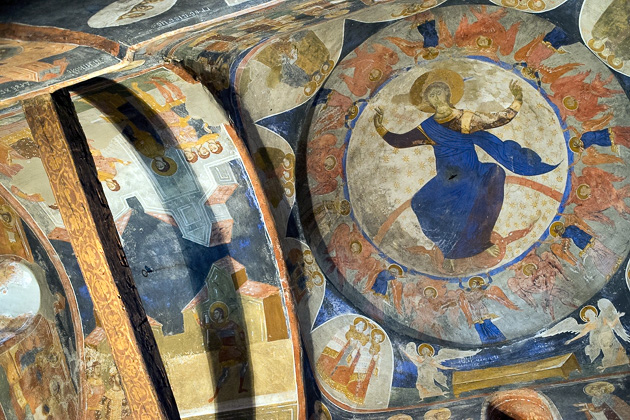
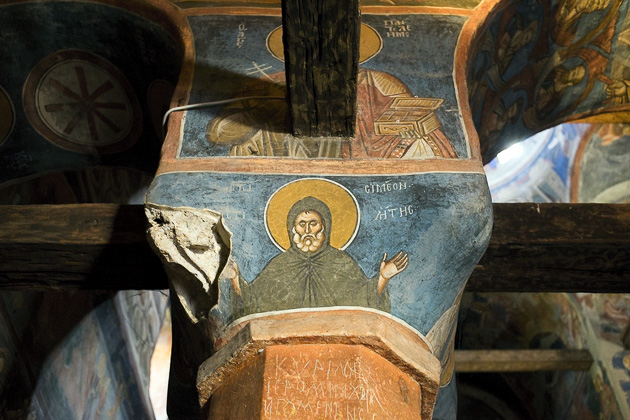
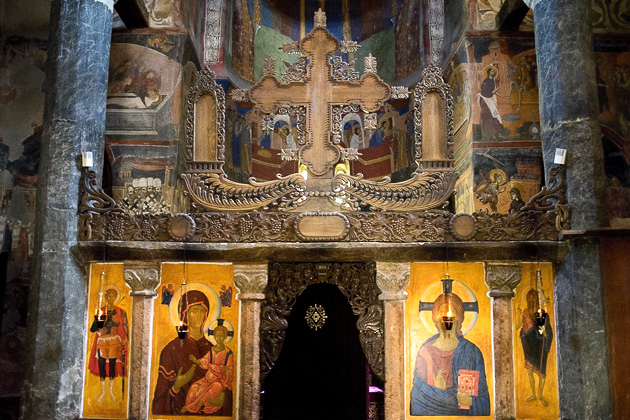
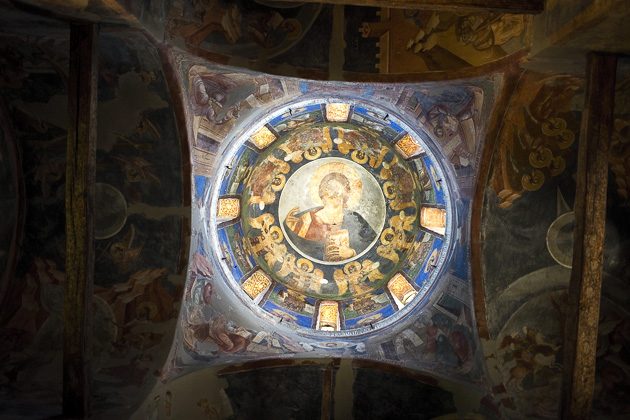
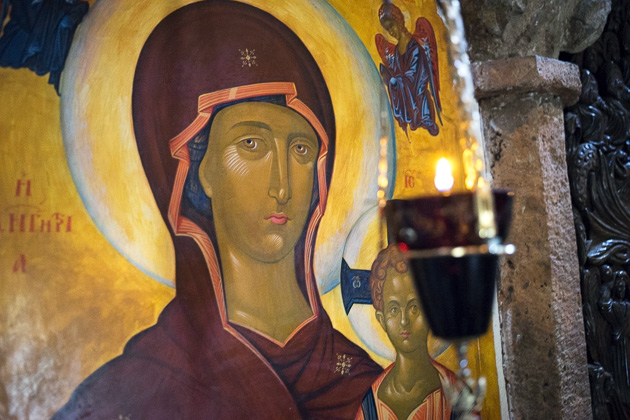
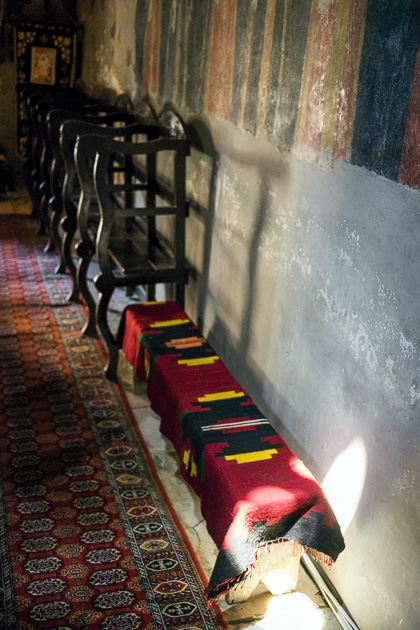
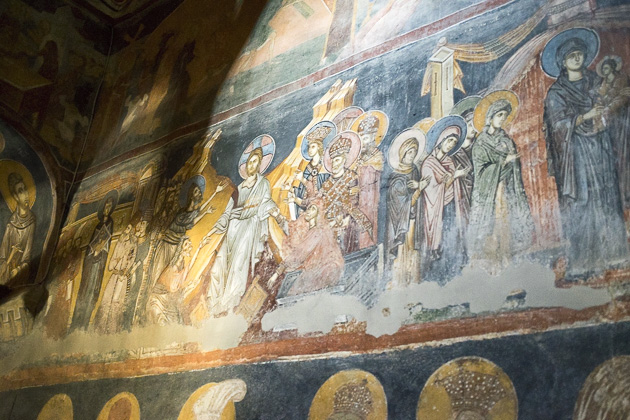
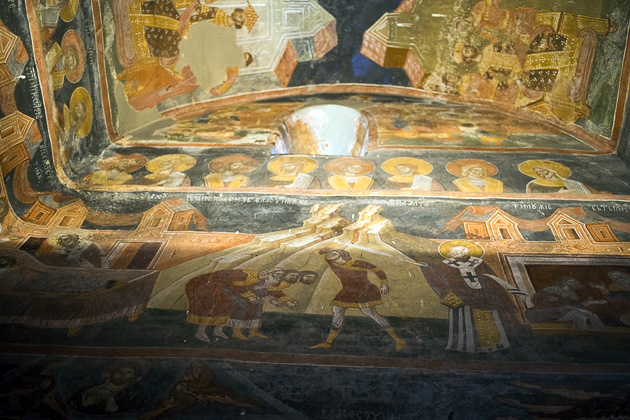
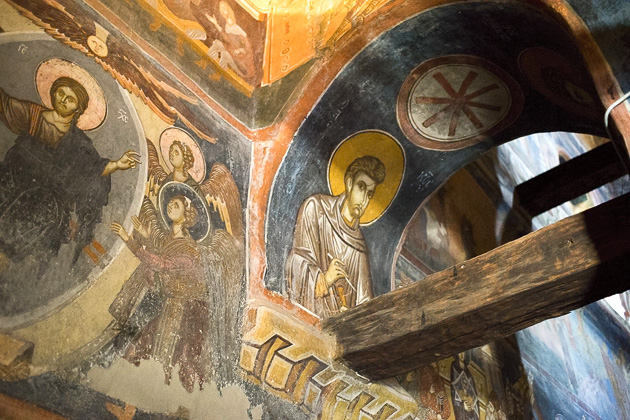
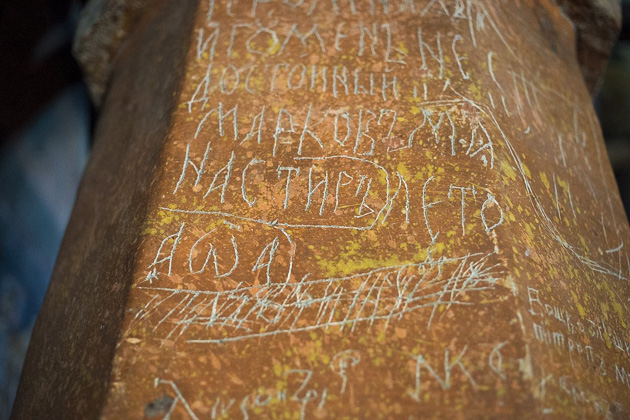

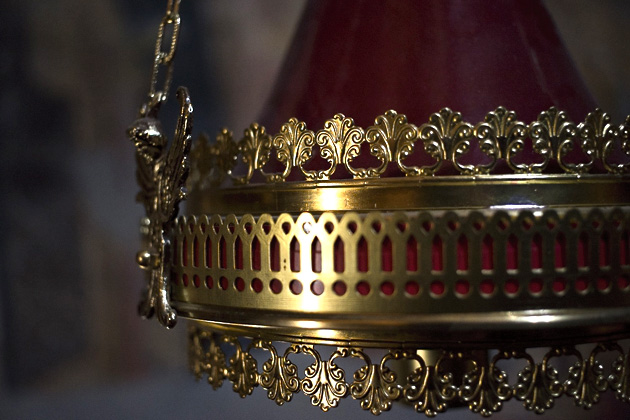
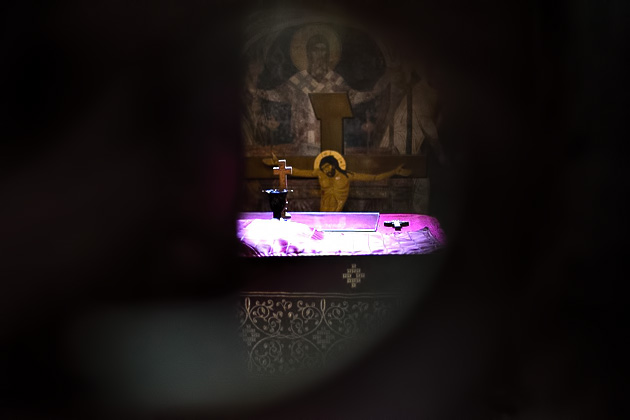
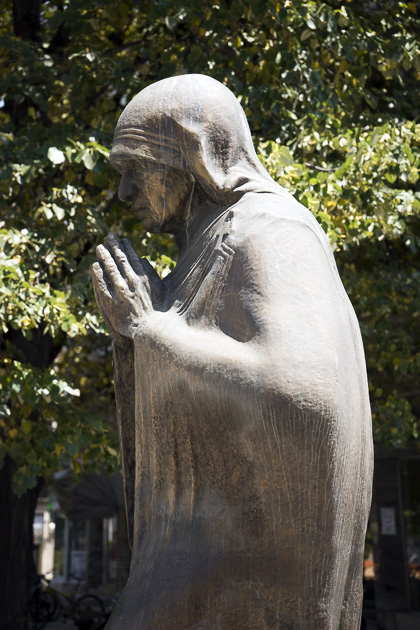
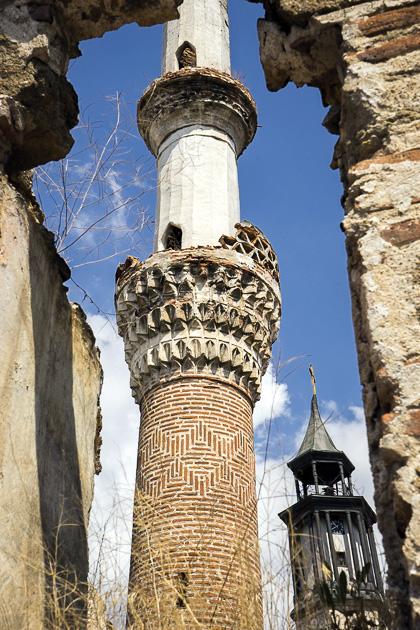
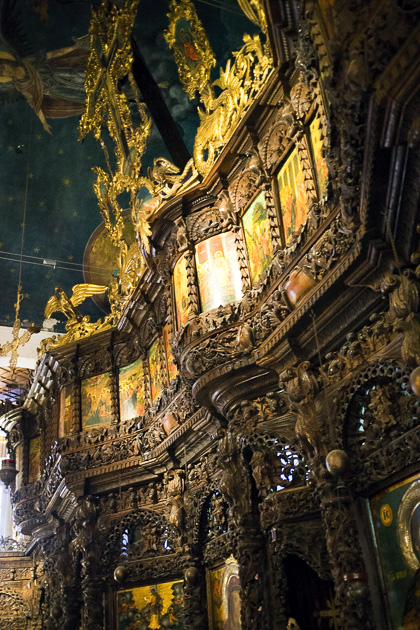

Beautiful